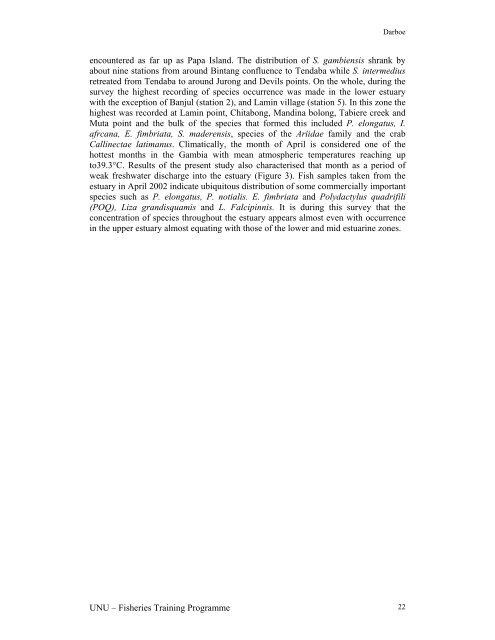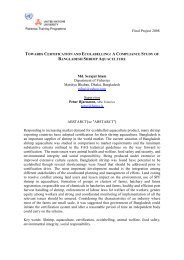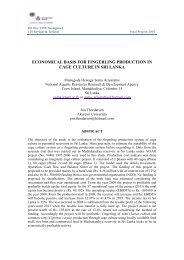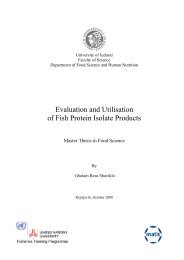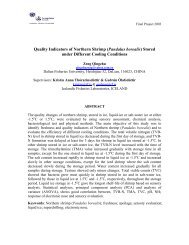Fish species abundance and distribution in The Gambia estuary
Fish species abundance and distribution in The Gambia estuary
Fish species abundance and distribution in The Gambia estuary
You also want an ePaper? Increase the reach of your titles
YUMPU automatically turns print PDFs into web optimized ePapers that Google loves.
Darboeencountered as far up as Papa Isl<strong>and</strong>. <strong>The</strong> <strong>distribution</strong> of S. gambiensis shrank byabout n<strong>in</strong>e stations from around B<strong>in</strong>tang confluence to Tendaba while S. <strong>in</strong>termediusretreated from Tendaba to around Jurong <strong>and</strong> Devils po<strong>in</strong>ts. On the whole, dur<strong>in</strong>g thesurvey the highest record<strong>in</strong>g of <strong>species</strong> occurrence was made <strong>in</strong> the lower <strong>estuary</strong>with the exception of Banjul (station 2), <strong>and</strong> Lam<strong>in</strong> village (station 5). In this zone thehighest was recorded at Lam<strong>in</strong> po<strong>in</strong>t, Chitabong, M<strong>and</strong><strong>in</strong>a bolong, Tabiere creek <strong>and</strong>Muta po<strong>in</strong>t <strong>and</strong> the bulk of the <strong>species</strong> that formed this <strong>in</strong>cluded P. elongatus, I.afrcana, E. fimbriata, S. maderensis, <strong>species</strong> of the Ariidae family <strong>and</strong> the crabCall<strong>in</strong>ectae latimanus. Climatically, the month of April is considered one of thehottest months <strong>in</strong> the <strong>Gambia</strong> with mean atmospheric temperatures reach<strong>in</strong>g upto39.3°C. Results of the present study also characterised that month as a period ofweak freshwater discharge <strong>in</strong>to the <strong>estuary</strong> (Figure 3). <strong>Fish</strong> samples taken from the<strong>estuary</strong> <strong>in</strong> April 2002 <strong>in</strong>dicate ubiquitous <strong>distribution</strong> of some commercially important<strong>species</strong> such as P. elongatus, P. notialis. E. fimbriata <strong>and</strong> Polydactylus quadrifili(POQ), Liza gr<strong>and</strong>isquamis <strong>and</strong> L. Falcip<strong>in</strong>nis. It is dur<strong>in</strong>g this survey that theconcentration of <strong>species</strong> throughout the <strong>estuary</strong> appears almost even with occurrence<strong>in</strong> the upper <strong>estuary</strong> almost equat<strong>in</strong>g with those of the lower <strong>and</strong> mid estuar<strong>in</strong>e zones.UNU – <strong>Fish</strong>eries Tra<strong>in</strong><strong>in</strong>g Programme 22


